Ideas for Brussels sprouts growing
Written by Joy
Nov 08 2021
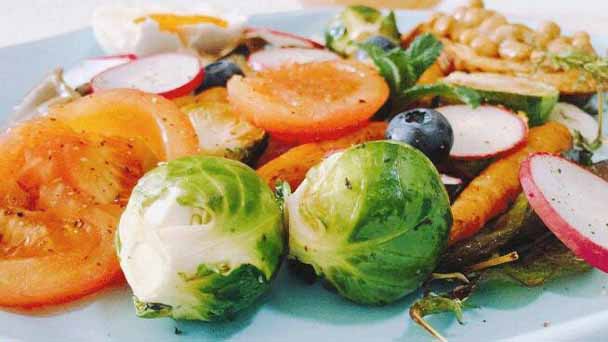
Brussels sprout plants prefer growing in the cold weather, strong cold resistance, and the suitable growth temperature is 12-20 ℃. The optimum temperature during the formation of lobular bulbs is 15-22°C during the day and 9-10°C at night. The best growth is in seasons or regions where the temperature difference between day and night is 10-15°C. Brussels sprout plant has wide adaptability to the soil, but the neutral and slightly acid loam soil is fertile, rich in humus, water and fertilizer. This article mainly introduces the cultivation of Brussels sprout plants in your garden.
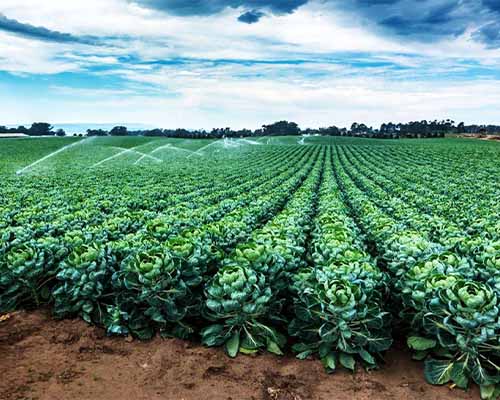 Brussels sprouts, a brassica genus of the cruciferous family, are biennial herbaceous and are frosted. The stem is stout, upright, 0.5-1 m high, and all leaf axils of the stem have large soft leaf buds, 2-3 cm in diameter. Basal leaves and lower stem leaves of Brussels sprouts are oblong obovate to round, up to 30 cm in length and width. The racemes are terminal and axillary; the flowers are light yellow, 2-2.5 cm in diameter. The peduncle of Brussels sprout plant is 7-15 mm long. The fruit stalk is thick, erect, and 2.5-3.5 cm long. The seeds of Brussels sprout plants are spherical, 1.5-2 mm in diameter, brown. Flowering in April, fruiting in May, Brussels sprouts plant is native to the Mediterranean coast and is widely grown in European and American countries. Brussels sprout plants are occasionally cultivated in major cities in China.
Brussels sprouts, a brassica genus of the cruciferous family, are biennial herbaceous and are frosted. The stem is stout, upright, 0.5-1 m high, and all leaf axils of the stem have large soft leaf buds, 2-3 cm in diameter. Basal leaves and lower stem leaves of Brussels sprouts are oblong obovate to round, up to 30 cm in length and width. The racemes are terminal and axillary; the flowers are light yellow, 2-2.5 cm in diameter. The peduncle of Brussels sprout plant is 7-15 mm long. The fruit stalk is thick, erect, and 2.5-3.5 cm long. The seeds of Brussels sprout plants are spherical, 1.5-2 mm in diameter, brown. Flowering in April, fruiting in May, Brussels sprouts plant is native to the Mediterranean coast and is widely grown in European and American countries. Brussels sprout plants are occasionally cultivated in major cities in China.
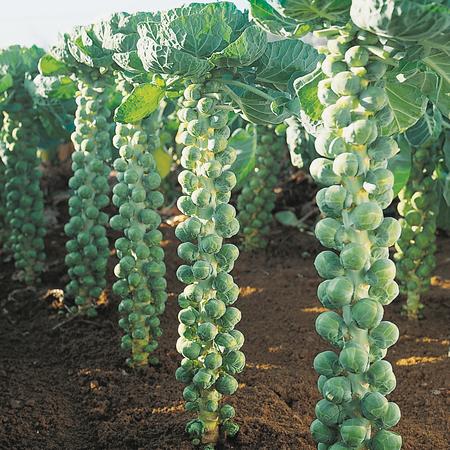 The planting field should be ploughed early, deep ploughed, whitened, and adequate base fertilizer applied. Medium-fertility soil, 5,000 kilograms of decomposed organic fertilizer per mu, 25 kilograms of special compound fertilizer for vegetables, prohibit the use of chemical or biological fertilizers, nitrate nitrogen fertilizers, municipal waste, sludge, and industrial waste that have not been registered by the national and provincial agricultural departments. base fertilizer. The width of the ditch is 90 cm, the width of the ditch is 30 cm, and the depth of 25 cm. One waist ditch is opened every 15 meters. The surrounding ditch is 25 cm wide and 35 cm deep. The border surface is leveled.
The planting field should be ploughed early, deep ploughed, whitened, and adequate base fertilizer applied. Medium-fertility soil, 5,000 kilograms of decomposed organic fertilizer per mu, 25 kilograms of special compound fertilizer for vegetables, prohibit the use of chemical or biological fertilizers, nitrate nitrogen fertilizers, municipal waste, sludge, and industrial waste that have not been registered by the national and provincial agricultural departments. base fertilizer. The width of the ditch is 90 cm, the width of the ditch is 30 cm, and the depth of 25 cm. One waist ditch is opened every 15 meters. The surrounding ditch is 25 cm wide and 35 cm deep. The border surface is leveled.
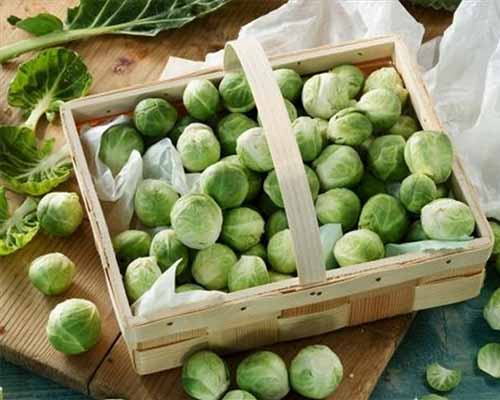 Because the main roots of Brussels sprouts are underdeveloped and the soil layer is relatively shallow, the rhizosphere soil is needed. After planting, watering is required many times, the border surface is easy to harden, it should be combined with weeding, loose soil, and rhizosphere cultivation for 3-4 times, to loosen the border surface, promote the growth of the roots and roots, and prevent the lodging of the Brussels sprout plant from affecting the formation and expansion of the bud bulb .
Because the main roots of Brussels sprouts are underdeveloped and the soil layer is relatively shallow, the rhizosphere soil is needed. After planting, watering is required many times, the border surface is easy to harden, it should be combined with weeding, loose soil, and rhizosphere cultivation for 3-4 times, to loosen the border surface, promote the growth of the roots and roots, and prevent the lodging of the Brussels sprout plant from affecting the formation and expansion of the bud bulb .
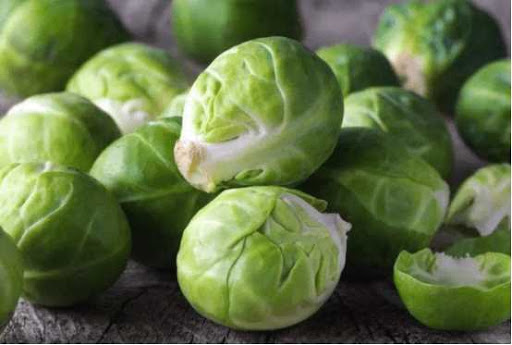 Brussels sprouts can be harvested when the bud bulbs are tightly packed and waxy. Early-maturing varieties start to be harvested 90-100 days after planting, and middle-maturing varieties start to harvest 105-115 days after planting. The harvesting period of Brussels sprout plant is relatively long. Generally, harvesting starts in December in Shanghai. If proper fertilizer and water are used, certain heat preservation measures in winter can be harvested continuously by the end of February of the following year. In seasons with higher temperatures, the base leaf bulbs are often not tight and loose, so they can be harvested in advance. When harvesting, you'd better use a knife to cut transversely from the base of the bud and remove the outer leaves of the bud. Brussels sprouts can be harvested multiple times from bottom to top, and each plant can harvest about 40 bud bulbs. Bud bulbs with a diameter of 2 to 4 cm are of good quality, requiring no disease and insect pests, no rot or deterioration, no burnt leaves, and smooth cuts, which meet the requirements of GB2762 and GB2763.
Brussels sprouts can be harvested when the bud bulbs are tightly packed and waxy. Early-maturing varieties start to be harvested 90-100 days after planting, and middle-maturing varieties start to harvest 105-115 days after planting. The harvesting period of Brussels sprout plant is relatively long. Generally, harvesting starts in December in Shanghai. If proper fertilizer and water are used, certain heat preservation measures in winter can be harvested continuously by the end of February of the following year. In seasons with higher temperatures, the base leaf bulbs are often not tight and loose, so they can be harvested in advance. When harvesting, you'd better use a knife to cut transversely from the base of the bud and remove the outer leaves of the bud. Brussels sprouts can be harvested multiple times from bottom to top, and each plant can harvest about 40 bud bulbs. Bud bulbs with a diameter of 2 to 4 cm are of good quality, requiring no disease and insect pests, no rot or deterioration, no burnt leaves, and smooth cuts, which meet the requirements of GB2762 and GB2763.
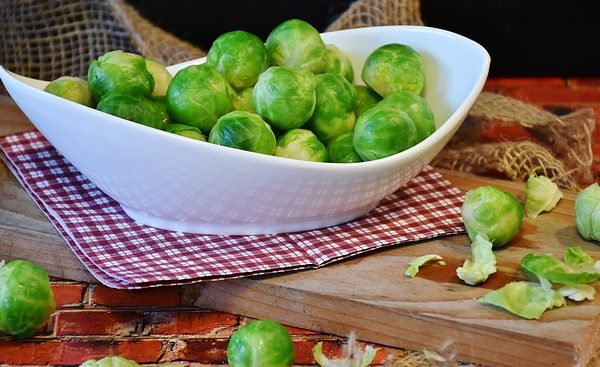 Gardeners could choose 3 parts of fertile garden soil that has not been planted with cruciferous vegetables in the past 3 years and mix 1 part of fully decomposed sieving ring fertilizer, and add 1 kg of ternary compound fertilizer for every cubic meter of mixed soil. You'd better mix well and spread it into the seedbed. 10 cm. The seedbed of Brussels sprout plants should be raked flat and thin, with a height of 1.2 meters wide, and then sowing seeds. 25 grams of seed per acre of field is required, and the seedbed area is 4 square meters. (Find more Winter Vegetables here.)
Gardeners could choose 3 parts of fertile garden soil that has not been planted with cruciferous vegetables in the past 3 years and mix 1 part of fully decomposed sieving ring fertilizer, and add 1 kg of ternary compound fertilizer for every cubic meter of mixed soil. You'd better mix well and spread it into the seedbed. 10 cm. The seedbed of Brussels sprout plants should be raked flat and thin, with a height of 1.2 meters wide, and then sowing seeds. 25 grams of seed per acre of field is required, and the seedbed area is 4 square meters. (Find more Winter Vegetables here.)
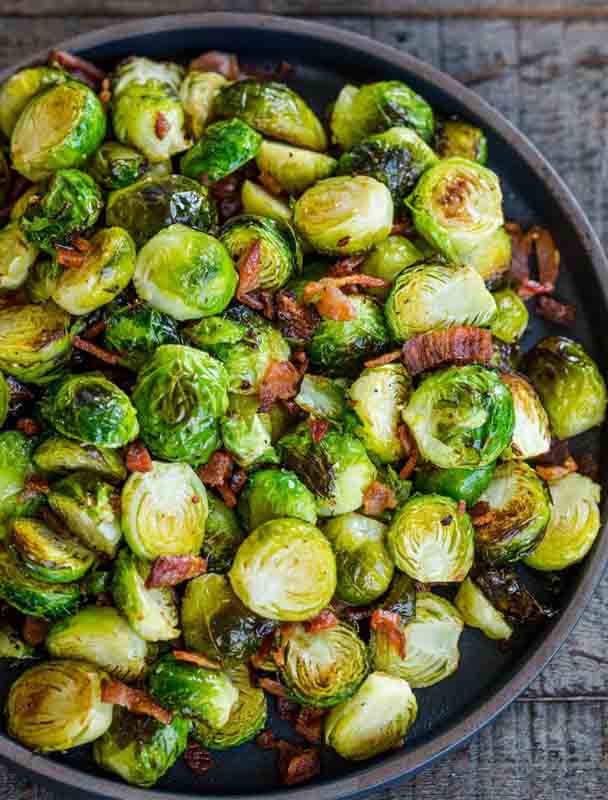 The prevention and control of diseases and insect pests follows the principles of agricultural prevention as the basis, physical prevention as the supplement, biological prevention as the mainstay, and scientific and reasonable chemical prevention and control. Before sowing, sterilize seeds and seedbeds, arrange crop rotation reasonably, weeding and cutting old leaves in the field in time, and do a good job of ventilation.
The prevention and control of diseases and insect pests follows the principles of agricultural prevention as the basis, physical prevention as the supplement, biological prevention as the mainstay, and scientific and reasonable chemical prevention and control. Before sowing, sterilize seeds and seedbeds, arrange crop rotation reasonably, weeding and cutting old leaves in the field in time, and do a good job of ventilation.
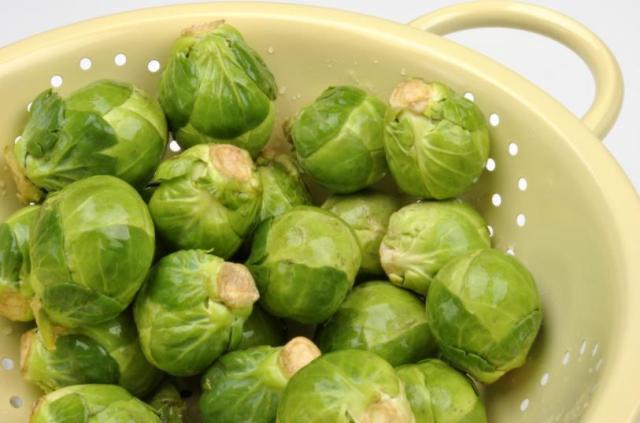 It is a bacterial disease. The diseased Brussels sprout plant should be removed in time at the early stage of the disease, and 72% agricultural streptomycin sulfate or 60% aluminum ethylsuccinate should be used for prevention and treatment. The medication should be used in turns, once every 10 days, for 2-5 times.
It is a bacterial disease. The diseased Brussels sprout plant should be removed in time at the early stage of the disease, and 72% agricultural streptomycin sulfate or 60% aluminum ethylsuccinate should be used for prevention and treatment. The medication should be used in turns, once every 10 days, for 2-5 times.

Site preparation and planting of Brussels sproutsFertilizer managementCultivation and weeding of Brussels sprouts Plastic trimmingHarvesting Brussels sproutsSowing time of Brussels sproutsSeedbed preparationSeedling managementStrong seedling standardPest control of Brussels sprout plantsDisease of Brussels sproutsBlightDowny mildewBlack rotPestsMain value of Brussels sprouts
Site preparation and planting of Brussels sprouts

Fertilizer management
After planting Brussels sprouts, you'd better water the root in time, and water after the slow seedling to promote plant growth. After the soil is short of water, replenish water in time to keep the soil water content at 70%-80%. The growth period of Brussels sprout plant is long. In addition to applying sufficient base fertilizer, top dressing is required 4 times. Watering live tree fertilizer 4-5 days after planting, and 5-10 kg of urea per acre. After 20 days, it's time to apply fertilizer once again, applying 10 kg of urea per acre and 10 kg of compound fertilizer per acre to promote plant nutrition so that the outer leaves of Brussels sprouts could reach about 40 pieces before entering the heading stage. The third top dressing in the bud bulb begins to expand, combined with watering and 15 kg of ternary compound fertilizer per acre hole. The fourth time when the bud bulb is first harvested top dressing, combined with watering, 15 kilograms of ternary compound fertilizer per mu. During the whole growth period of Brussels sprouts, 50 kg of nitrogen fertilizer, 20 kg of phosphate fertilizer and 25 kg of potassium fertilizer are applied per acre.Cultivation and weeding of Brussels sprouts

Plastic trimming
When small bud bulbs are produced in the middle of the stalk of Brussels sprouts, the lower old leaves can be removed to facilitate field ventilation and light transmission, promote bud bulb development, and facilitate the harvest of bud bulbs. At the same time, the top core is removed at the right time to inhibit the upward growth of plants, reduce nutrient consumption, and promote the growth of bud bulbs.Harvesting Brussels sprouts

Sowing time of Brussels sprouts
You ought to determine the sowing time according to the variety characteristics and cultivation methods. Early-maturing varieties are generally selected for open field cultivation in Shanghai, and sown in late July and early August. Early and mid-maturing varieties can be used for protected field cultivation, and sown of Brussels sprouts from late July to early September. Late-maturing Brussels sprouts varieties can be sown early, and early-maturing varieties can be sown late. The seed purity is required to be over 97%, and the germination rate should over 85%, which meets the GB16715.4-1999 standard.Seedbed preparation

Seedling management
After sowing, it's a good choice to cover with shallow fine soil, cover the bed surface with black shading nets, pour water through to keep the borders moist, and remove the shading nets when the seedlings begin to emerge. In order to cool down and prevent rainstorms, the border surface should be covered with a rain shed, covered with sunshade nets, and exposed day and night. The seedlings of Brussels sprout plants are divided once when there are 2 true leaves, and the transplant bed area is about 10 times the seedbed area. During the process of raising Brussels sprouts seedlings, appropriate topdressing of nitrogen fertilizers should be made according to the condition of the seedlings, watering frequently to keep the soil moist, and timely draining of field water after rain. At the seedling stage, attention should be paid to the occurrence of diseases and insect pests, and timely control should be taken if found. Seedlings can be planted in the field when there are 6-8 true leaves, and the seedling age is 35-40 days.Strong seedling standard
The Brussels sprout plant is sturdy, with 6-8 true leaves. The leaf color is blue and green, the leaves are rich, wax powder is rich, the root system is developed, and there is no pests.Pest control of Brussels sprout plants

Disease of Brussels sprouts
The main diseases of Brussels sprouts are blight, downy mildew and black rot.Blight
Such a disease of Brussels sprouts occurs in the seedling stage. After the plant is infected, it can be seen wilting and withering within a few days until it dies. The germs require more than 98% relative humidity for germination, so no water can accumulate in the seedling stage. You'd better use 75 after removing the diseased plant at the initial stage of disease % Chlorothalonil sprayed.Downy mildew
Generally, it is easy to get sick in rainy weather, poor ventilation, and continuous cropping. Field management should be done, and 25% metalaxyl spray should be used after the onset.Black rot

Pests
There are mainly aphids, cabbage caterpillars, diamondback moths, etc., which should be inspected and controlled in time, and sprayed with Kuailing and imidacloprid. You'd better use physical methods such as silver insect-proof nets, yellow sticky boards, and frequency-vibration insecticidal lamps to repel and trap aphids, diamondback moths, and adult armyworms. Biological control can use biological pesticide BT emulsion to control Plutella xylostella and Pieris rapae, release parasitic wasps or use sex attractant to trap Plutella xylostella and Brassica oleracea. The use of chemical pesticides should meet the requirements of GB4285 and GB8321. It's a good choice to use insecticides such as imidacloprid, acetamid, acetamiprid, abamectin, ace, fipronil, chlorinate, and caixi to control aphids, diamondback moth, cabbage armyworm and Pieris rapae. In the process of pesticide use, tons of attention should be paid to the formulation, dosage, and safety interval, and different pesticides should be used alternately to prevent and control the same kind of pests.Main value of Brussels sprouts
Brussels sprouts are mainly composed of fresh lobules formed in the axillary buds of edible plants. The lobules have a rare shape, fresh and tender, sweet and rich, unique in flavor and rich in nutrients. Its protein content is the highest in headed leafy vegetables. Brussels sprouts contain sulfur glycosides, which are isothiocyanate compounds and are natural insecticides in plants that can relieve poisoning and chronic diseases such as lung inflammation or gastritis caused by Helicobacter bacillus. Brussels sprout plants contain 20 basic vitamins, including important vitamins A, B, C, and K, which help enhance human immunity and reduce the chance of infection. In addition, Brussels sprouts is also rich in minerals, such as zinc, potassium, calcium, phosphorus, magnesium, manganese, etc., which help promote cell division, repair, and regeneration. And rich in dietary fiber, it helps to defecate, lower cholesterol, prevent cardiovascular disease risk, and even prevent type 2 diabetes.Read Next:
10 Best Winter Vegetables that Improve Your Health
15 Fall Vegetables to Plant for Your Autumn Garden
Latest Updated
- Benefits of Bugleweed - 7 Science-backed Health Benefits
- Bugleweed Dangers & Side Effects - Is It Poisonous?
- How to Plant Evergreen Trees - What You Should Know
- When to Plant Evergreens - Grow Guide for Evergreen Trees
- 12 Wonderful Evergreen Shrubs for Your Garden
- 12 Popular Evergreen Plants with Pictures for Beginners
- When And How To Prune A Lilac Bush Like a Pro
- How to Grow & Care for Lilac Vine (Hardenbergia Violacea)
- Japanese Lilac Tree (Syringa Reticulata) Care & Propagation Guide
- Shumard Oak Pros and Cons - What to Know
Popular Articles
- Winter maintenance of Antirrhinum Majus
- How to Grow Terminalia Mantaly Tree
- How to Grow and Care for Crossostephium Chinense
- How to grow Antirrhinum Majus in spring
- Peristeria Elata (Dove Orchid) Profile: Info & Care Guide
- Underwatered Snake Plant (Sansevieria Trifasciata) - Signs And How To Fix
- How to Care for Brazilian Jasmine Plant (Mandevilla Sanderi)
- How to Grow & Care for Graptopetalum Purple Delight in Summer
- Rosa Chinensis (China Rose): Plant Growing & Care Tips
- How to Care for Baby Sun Rose (Aptenia Cordifolia)